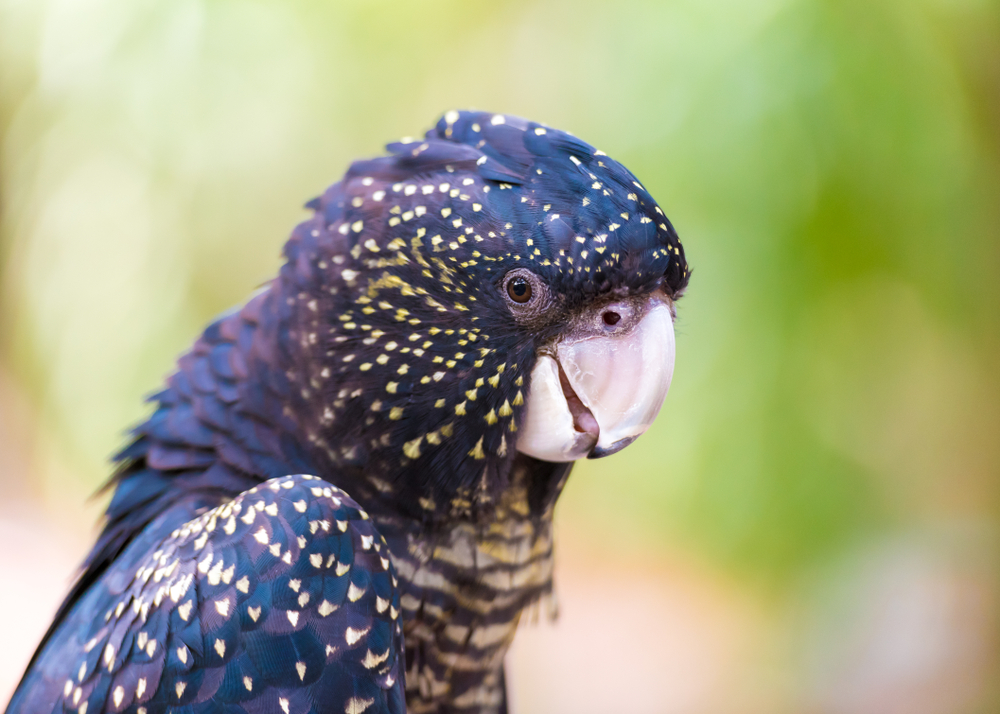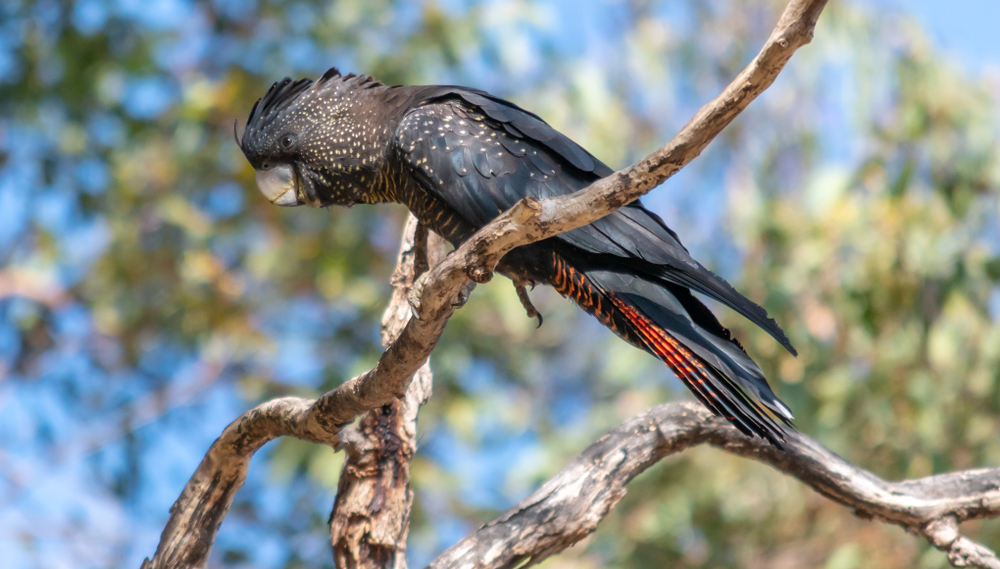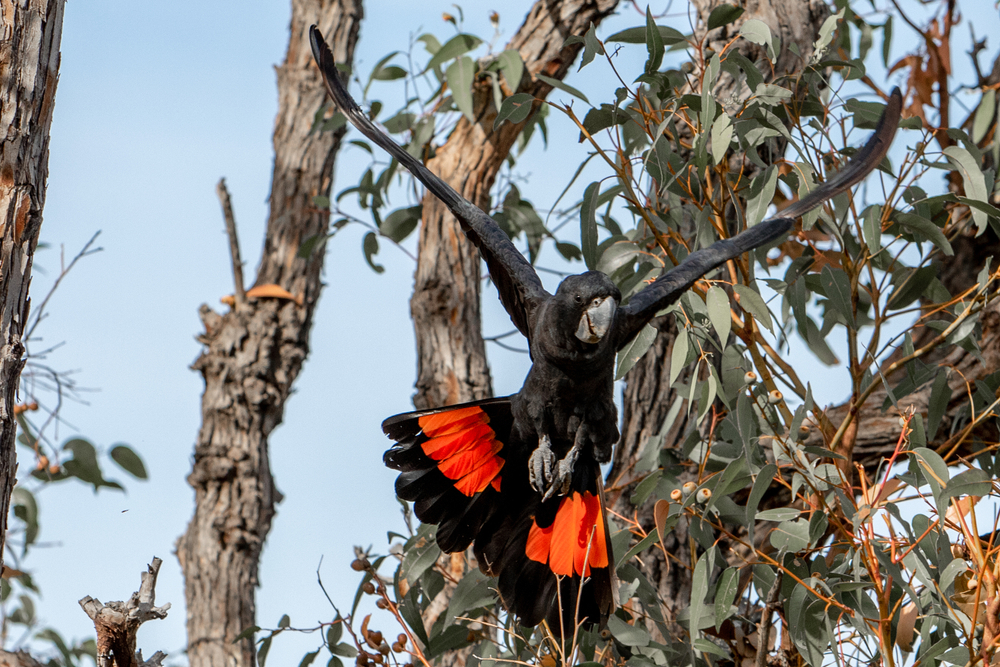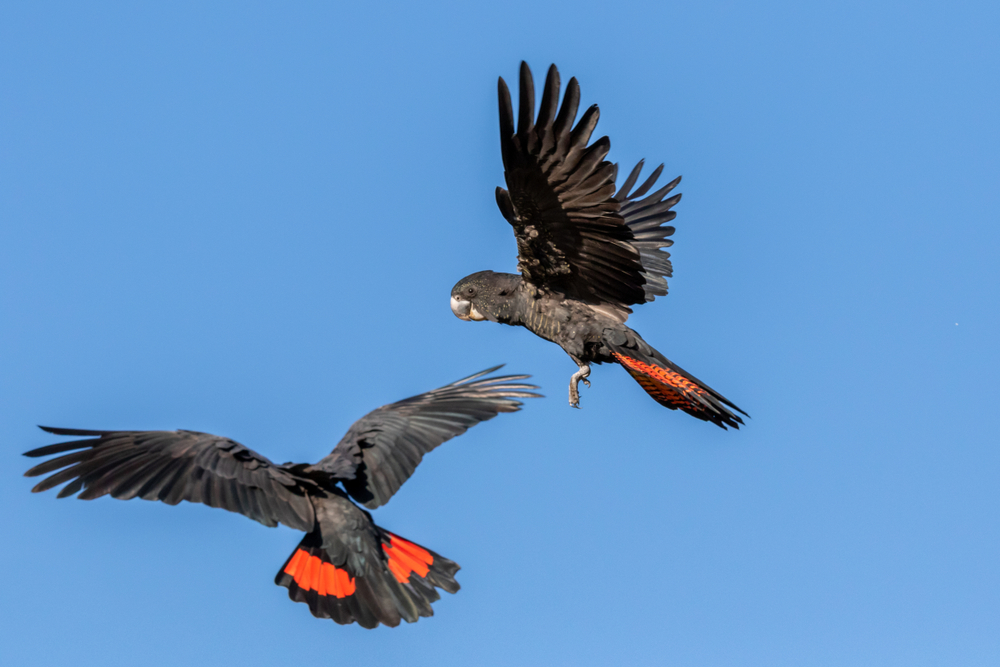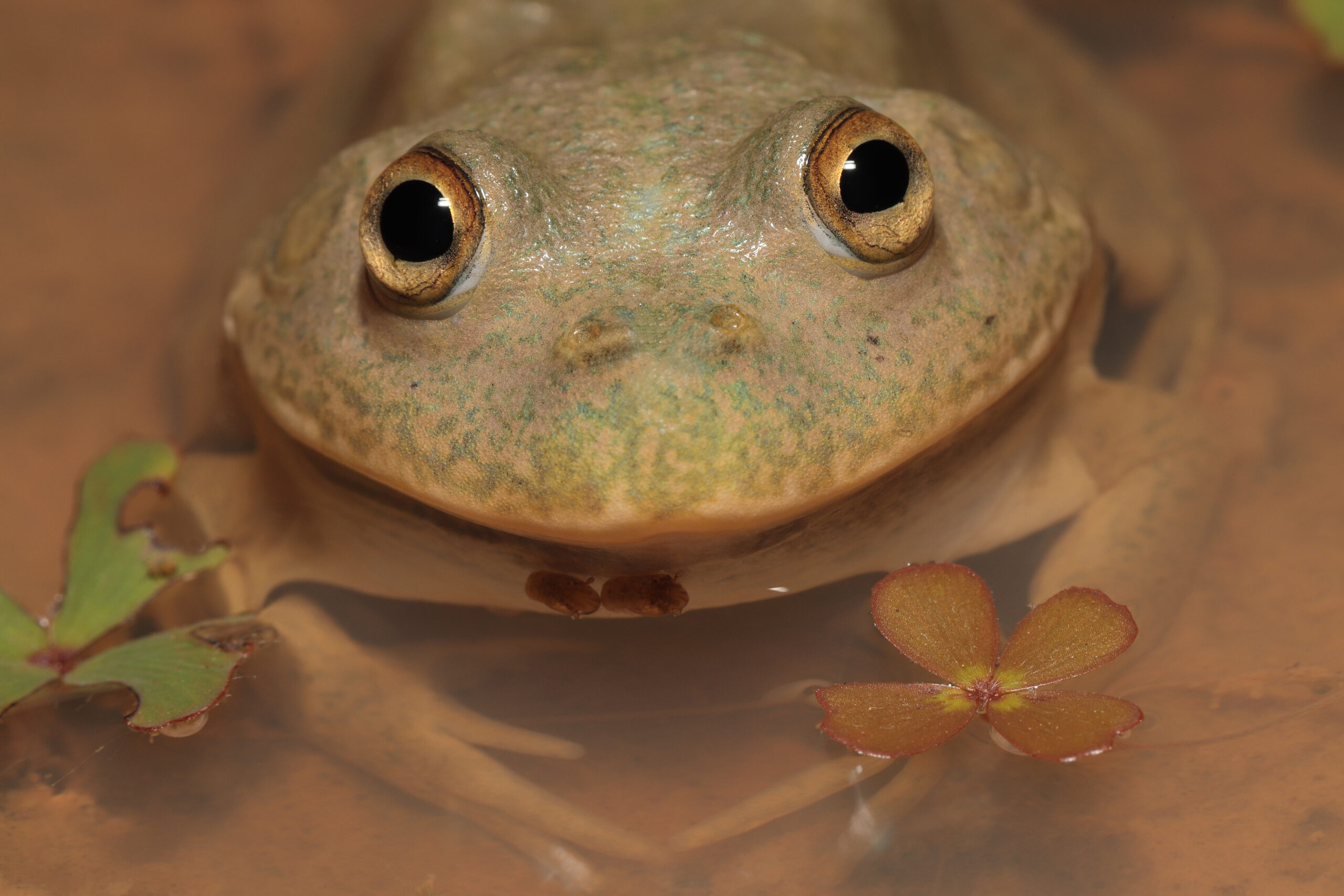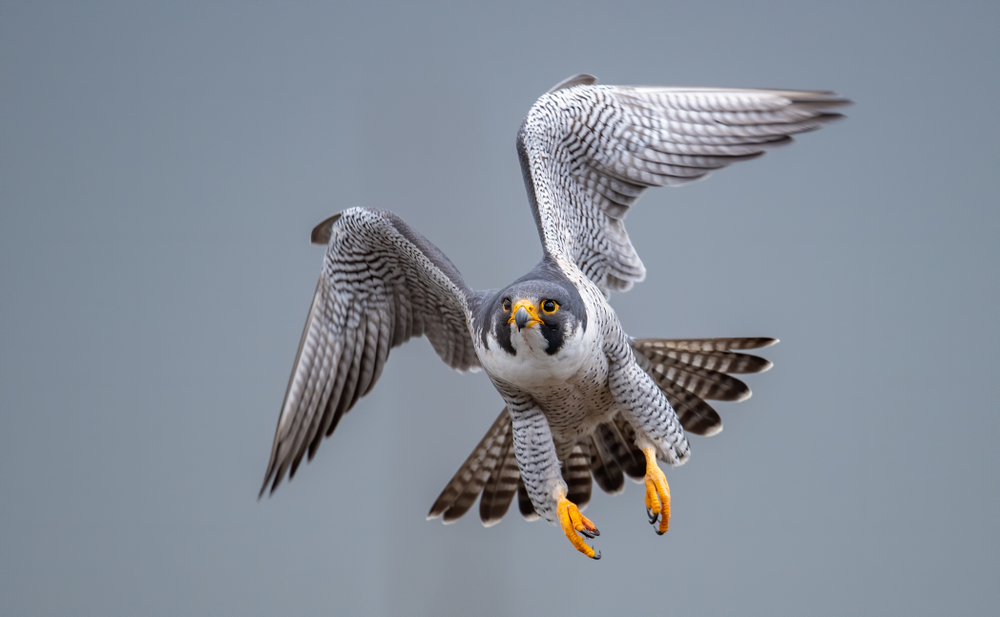| Common name | Red-tailed black-cockatoo |
| Scientific name | Calyptorhynchus banksii |
| Type | Bird |
| Diet | Mainly seeds, but also fruit, flowers and sometimes insects |
| Average lifespan | Between 25 and 50 years in the wild |
| Size | 55cm to 60cm in length, wingspan of up to 110cm |
Cast your eyes to the sky if you hear a high pitched ‘cree-cree’ sound and if you’re lucky you’ll witness a flock of red-tailed black-cockatoos calling to one another during their sky-high voyage.
Whether or not you believe the common myth that the movement of black-cockatoos means bad weather is on its way, that iconic flash of red under the black tail feathers of a red-tailed-cockatoo is enough to stop any nature enthusiast in their tracks.
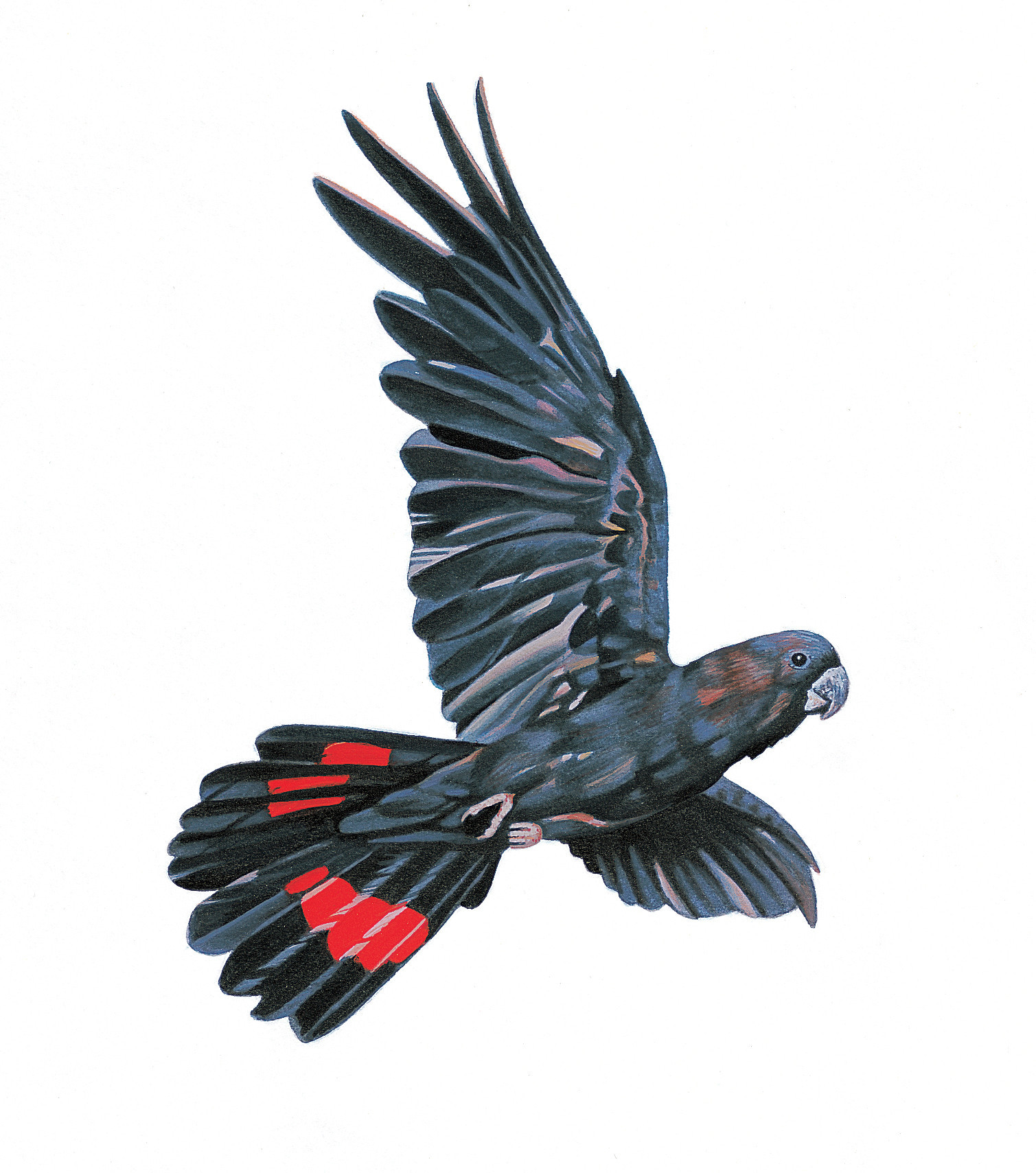
This large, glossy cockatoo is jet black, with a heavy bill and is named after its spectacular red to orange tail feathers that resemble a sunset. With a unique crest that protrudes past its bill, this distinguished feathery crown that belongs to the red-tailed black-cockatoo is unlike any other crest within the black cockatoo family. The male is truer to its name and is glossy black in colour with bright red segments in its tail. The female cockatoo is duller in colour and has distinct yellow spots on her wings, neck and head, yellowish barring to the underbody and paler yellowy panels in the tail.
The red-tailed black-cockatoo is the most widely distributed of the black cockatoos. There are five subspecies that can be found broadly across northern, western, and eastern Australia. A smaller, isolated subspecies occurs within Victoria and South Australia.
Living happily in a range of habitats, the red-tailed black-cockatoo occurs mainly in eucalyptus forests or woodland areas of fertile riparian flats and floodplains. Also found in grasslands and farmlands, the red-tailed black-cockatoo subspecies has been reported within north-eastern NSW in dry open forest and mixed rainforest-eucalypt forest.
Known as dispersive birds, the red-tailed black-cockatoo will move away from its birthplace to breed. Seasonal food availability may also impact the movements of this bird.
Seeds make up most of the diet of the red-tailed black-cockatoo, with favoured plants including the eucalyptus, casuarina, acacia and banksia. Birds also eat flowers, fruit berries, nectar and occasionally insects and larvae. Highly nomadic, red-tails spend much of their time searching for stringybark species that have produced a high seed crop.
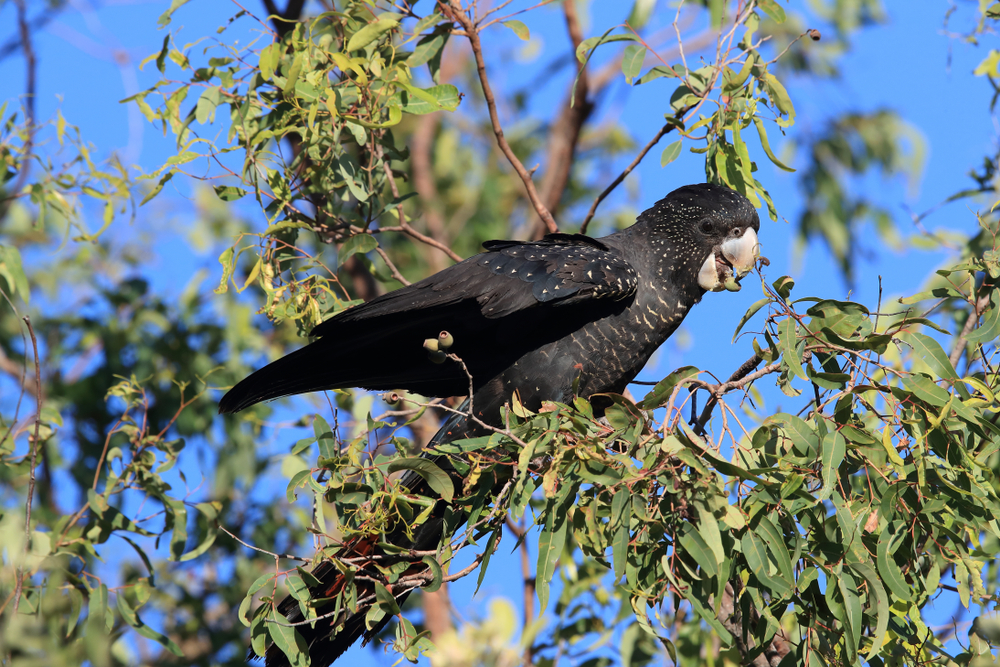
Like many species of cockatoo, the red-tailed black-cockatoo will build a nest up high, in tree hollows, dead tree stumps, or at the end of an old trunk, usually of the eucalyptus or melaleuca variety. Uniquely, the red-tailed black-cockatoo will enter the tree hollow tail first, reversing into its nest which is lined with tree fragments and wood dust.
Breeding for the red-tail takes place all year round, depending on the subspecies of the bird and the location in which they reside. In NSW, eggs have been recorded in May, whereas in the south-eastern subspecies of cockatoo, the graptogyne, breeding takes place between October and May.
Birds usually lay one egg, or occasionally two, within the nest, and the female incubates this egg for around 30 days. It can take up to three months for red-tailed chicks to fledge or leave the nest, and these juveniles may continue to feed alongside their parents for a further six months.
During the breeding season, red-tailed black-cockatoos are usually seen alone or in family groups of two and three birds. When an area has a plentiful food supply during the Autumn and Winter periods, flocks of between 100 and 250 birds can be seen feasting on concentrated food supplies.

